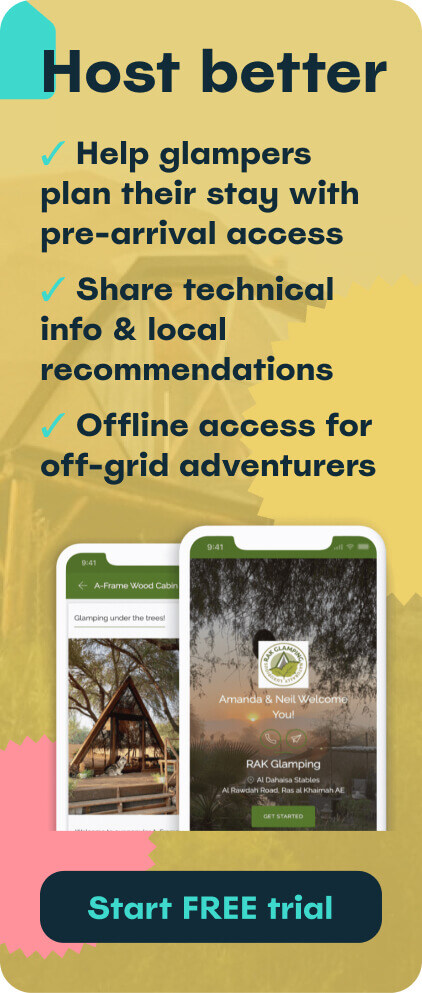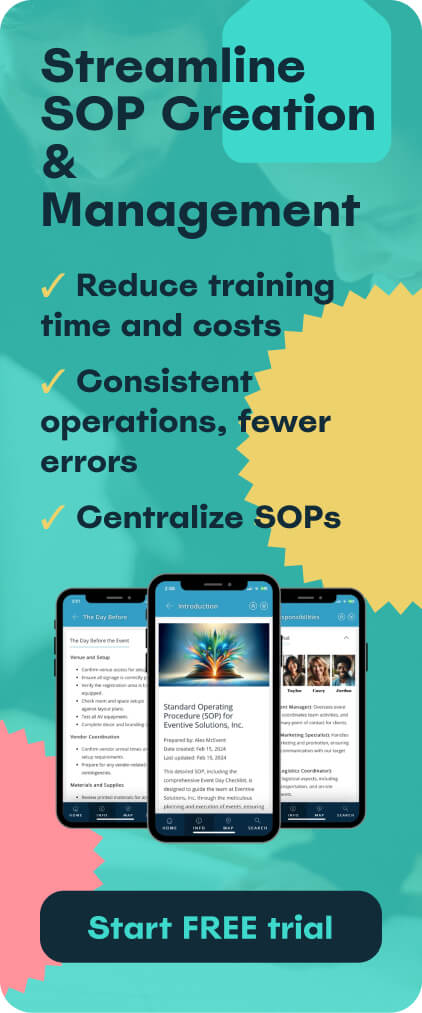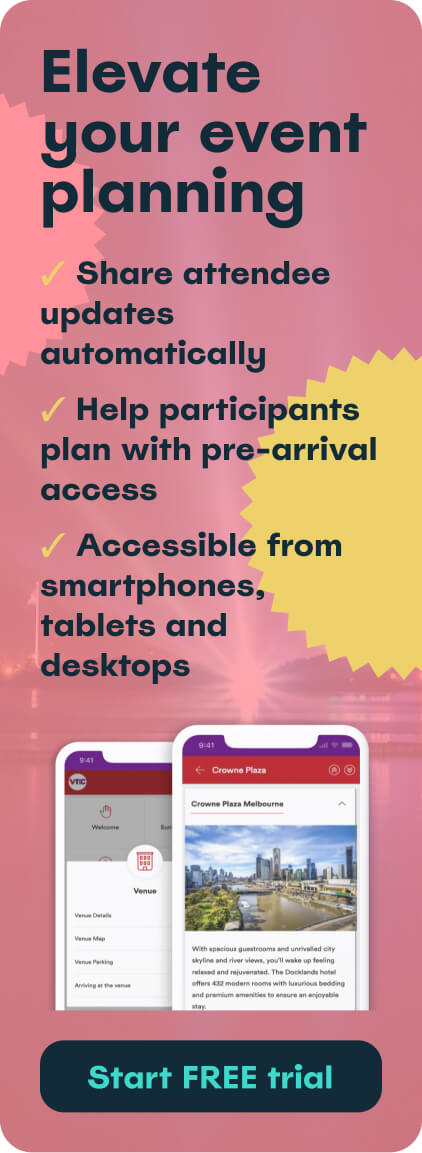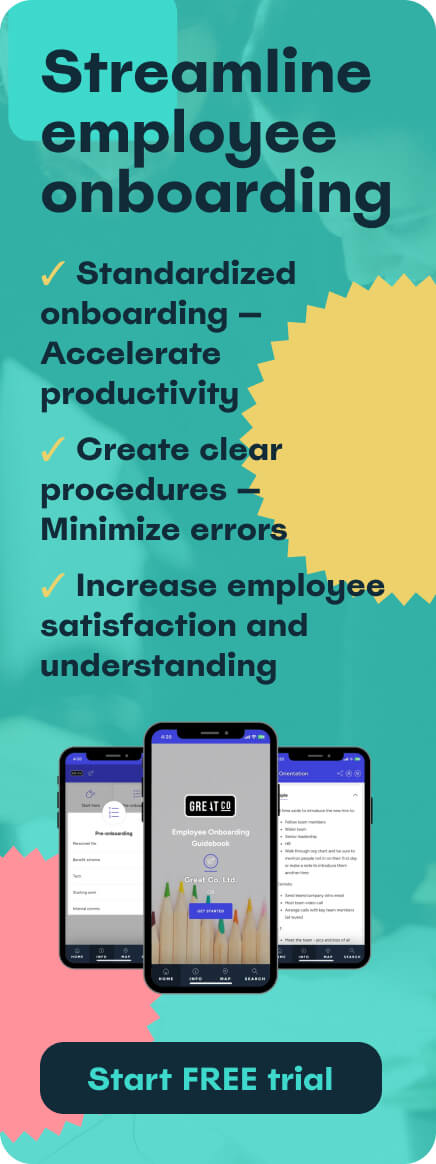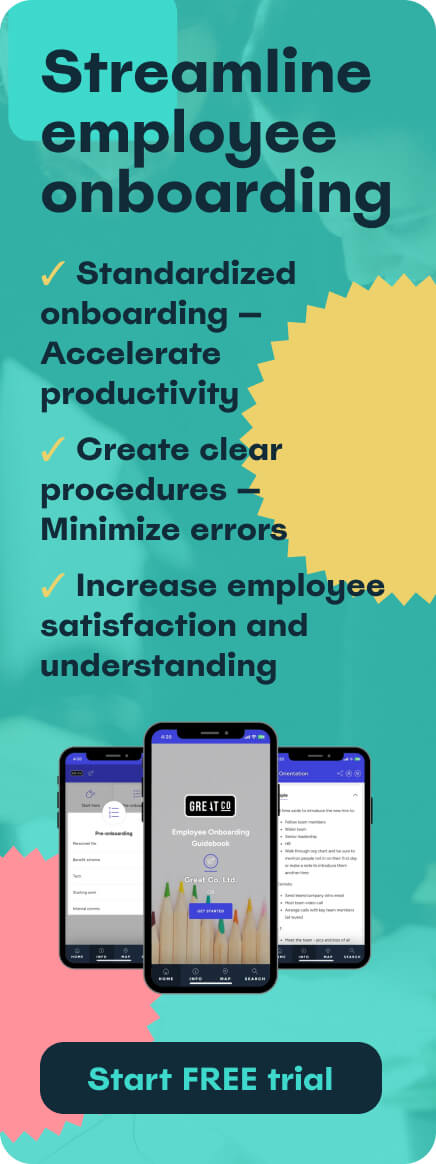Employee onboarding is the crucial process of integrating new hires into the workplace. It’s more than just a one-day orientation; it's the compass guiding new hires through the first months of their new job.
Understanding what a good employee onboarding plan looks like goes beyond paperwork. It’s about laying the foundations for success by familiarising individuals with their roles, the company culture, and fostering a sense of belonging.
The impact of a strong onboarding process for employees includes employee satisfaction, accelerated productivity, and long-term success. Read on to discover the importance of an effective employee onboarding plan, the best practices for onboarding new employees, and the solutions to the common challenges you may encounter.
- Employee onboarding definition
- The importance of effective employee onboarding
- Key components of employee onboarding
- Phases of the onboarding process
- Impact of technology on employee onboarding
- Challenges in employee onboarding
Make onboarding easy with a simple checklist.
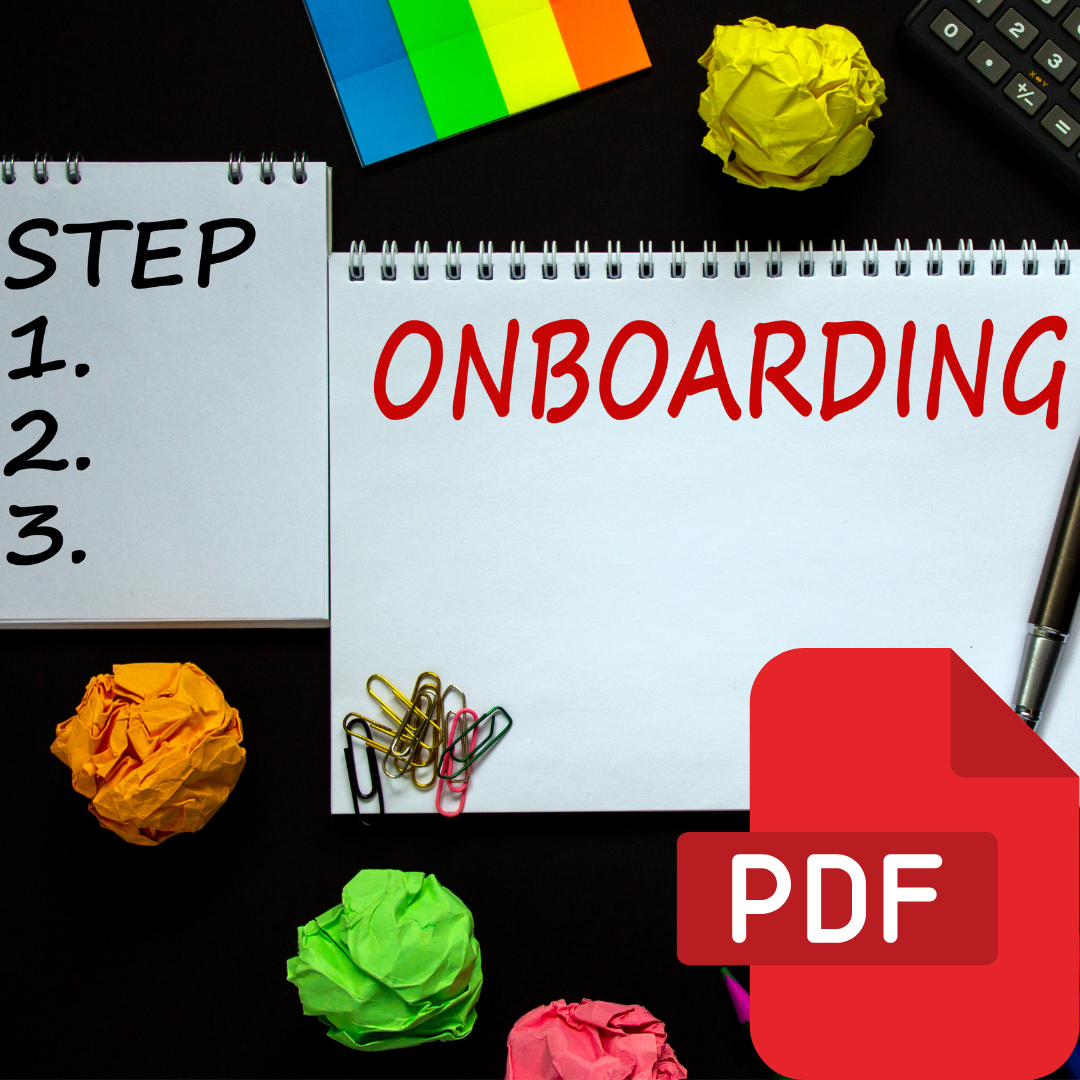
Download your free employee onboarding checklist
Employee onboarding definition
So, what is the employee onboarding definition?
Employee onboarding is the structured process that welcomes and integrates new hires into a company, ensuring they feel comfortable, informed, and ready to contribute effectively from day one. It should be thought of as a journey that spans the initial orientation to the employee’s continuous development, not just a one-day affair.
Employee onboarding involves more than an introduction; it's about equipping individuals with the knowledge, skills, and cultural insights essential for success within a company. This process goes beyond the typical HR paperwork and encompasses a strategic approach to engage, acclimate, and connect new employees to the company's values, the workplace environment, and their roles. According to Bamboo HR, new employees with good onboarding experience are 18x more committed to their employer.
While orientation is often a singular event providing basic information like company policies and benefits, employee onboarding is a holistic experience. It goes beyond the initial orientation, covering an extended timeframe, sometimes stretching into several months. Onboarding involves a deeper dive into the company culture, team dynamics, and ongoing training, ensuring a smoother integration into the workplace environment.
When we consider, ‘What is employee onboarding?’ we're delving into a dynamic process that transforms a new hire into a valued, informed, and connected company member. It's about setting the stage for success, fostering a positive workplace experience, and ensuring your values and expectations are aligned.
The importance of effective employee onboarding
Picture this: a seamless employee onboarding process that not only introduces new hires to their roles but also ignites a sense of belonging and purpose. That's the magic of an effective employee onboarding plan, and its importance cannot be overstated.
For employees, onboarding can be compared to a compass guiding them through the uncharted waters of a new workplace. A Glassdoor survey revealed that, when conducted properly, onboarding improves a company’s retention rate by 82%.
It can make or break a new hire’s perception of an organisation and can transform any uncertainties into confidence. If you consider that 69% of employees are more likely to stay at a company for three years if they experience great onboarding, you can see the impact of a strong employee onboarding plan.
Onboarding and employee retention are the dynamic duo that can determine an organisation’s success, yet it is often overlooked. Statistics show that 35% of companies have no formal onboarding program and 60% of companies fail to set milestones or goals for new hires.
So, it comes as no surprise that when there’s a lack of a comprehensive employee onboarding plan, 23% of new hires turnover before their first year and 23% of employees who quit within 6 months attribute it to a lack of clear guidelines on their responsibilities.
So, what's the link between onboarding and employee retention? It's simple - an effective employee onboarding process sets the stage for engagement.
When new hires feel connected, supported, and informed, they are more likely to stay committed for the long haul. In the grand scheme of things, an effective employee onboarding process should be regarded as an investment in the future success of both individuals and the organisations they contribute to. It's the secret to fostering a positive work environment, reducing turnover costs, and boosting productivity.
Learn more about the onboarding process in our blog: How to onboard a new employee.
Key components of employee onboarding
Embarking on a new job should feel like the opening chapter of an exciting adventure. A well-crafted employee onboarding process is the key to turning that vision into reality, ensuring that individuals not only understand their roles but also become integral parts of the organisational fabric.
Administrative tasks and paperwork
Employee onboarding processes typically commence with the necessary paperwork. Streamlining this aspect ensures a smooth transition without overwhelming new hires. This includes documentation related to employment contracts, tax forms, and benefits enrolment.
Top tip: having a designated person to go through each administrative task with a new employee can help them feel less overwhelmed. Research shows that, among employees who received effective benefits training, 70% fully use their benefits. That number drops to just 27% among employees who didn’t receive effective benefits training.
Comprehensive training
Effective training is the backbone of successful onboarding. Beyond basic job responsibilities, it should encompass an understanding of the company culture, mission, and values. This involves both formal training sessions and hands-on experiences.
Top tip: creating a virtual employee onboarding ‘bible’ so everything is in one place is a great way to give new hires confidence. This digital handbook should include links to a variety of resources demonstrated across different mediums to maximise engagement and cater to all learning abilities.
Social integration
Socialising is more than just an icebreaker; it's a crucial part of feeling connected to a team and the wider company workplace. Successful onboarding involves integrating new hires into the existing social fabric. This can include team-building activities, mentorship programs, and welcoming rituals.
Top tip: set up an introductory group call with as many team members as possible, or encourage them to be in the office for a new hire’s first day. This way, faces will be familiar and new employees can feel more comfortable approaching relevant team members.
Technology integration
Leveraging technology in the onboarding process is a modern-day necessity. An employee onboarding checklist should include the setup of necessary tools, access to software, and orientation on company-specific technology.
Top tip: again, a digital handbook is a great way to provide new employees with all the necessary information in one place, especially for something as complex as technology. Specifically, links to video tutorials for using key company software would be beneficial.
Creating a comprehensive employee onboarding checklist for each key component is advisable to make sure you’ve covered all bases. Below is a snapshot of a general onboarding checklist:
- Welcome package and introduction to the team.
- Clear documentation of job responsibilities and expectations.
- Comprehensive training plan, both formal and informal.
- Integration into company culture through social activities.
- Technology setup and orientation.
- Regular check-ins to address queries and provide support.
You can find our guide on the ultimate employee onboarding checklist here.
Phases of the onboarding process
There are multiple phases to the onboarding process for employees, all of which have different goals. Here, we break down the phases, highlighting how the employee onboarding process is certainly not a one-step journey.
Pre-onboarding: setting the stage
Employee onboarding processes begin before the official start date. During this phase, the focus is on paperwork, logistics, and creating a warm welcome.
Goals include ensuring all necessary documentation is completed, preparing the workspace, and engaging new hires with pre-boarding materials. The objective is to build excitement and anticipation for the upcoming journey.
To soothe the inevitable anxieties, it’s best to welcome a new employee before their first day with an onboarding email that includes what time to arrive and where, the expected dress code, where to park, and who to meet with upon arrival.
The first day: a grand welcome
The spotlight is on making a memorable first impression. Welcome kits, introductions to team members, and an overview of the workplace are key activities. The employee onboarding plan for the first day aims to alleviate nerves, provide a sense of belonging, and offer initial insights into the company culture.
A good way of ensuring a new employee feels supported and comfortable to ask questions on their first day is by assigning them a ‘buddy’. This refers to a person who stays close by and is on hand to help with queries, no matter how big or small. Whether it's knowing where to look for login details for accounts, or where to go for lunch, a ‘buddy’ is there to make the first day as comfortable and positive as possible.
The first month: immersion and learning
This phase dives deeper into the employee onboarding process. Training sessions, goal-setting discussions, and ongoing introductions to various departments occur. The employee onboarding system during the first month focuses on ensuring that new hires understand their roles, get acclimated to the company’s values, and feel supported as they navigate their responsibilities.
Regularly scheduled check-ins with various people across the company are a good way to make sure the employee is on track, any burning questions are answered, and to reinforce their learning. With hybrid working turning into the norm, it’s a good idea to set an onboarding task for the first month as organising 121s with the wider team, so no face is unfamiliar.
The first year: continuous growth
Onboarding doesn't end after the first month; it evolves into an ongoing process. The first year is about continuous learning, professional development, and feedback.
The onboarding process for employees in the first year aims at fostering a sense of long-term commitment and growth within the organisation. Regular check-ins, mentorship programs, and participation in projects all contribute to sustained engagement.
Impact of technology on employee onboarding
In the ever-evolving landscape of HR, technology has emerged as the architect of a seamless employee onboarding process. The impact is profound, reshaping the onboarding experience and enhancing efficiency across the board. Research from the 2023 Talent Acquisition Technology Buyer’s Guide suggests that an average of $20 per paper is spent on filing, $120 is spent on looking for lost documents, and $220 is spent on recreating lost documents.
Employee onboarding tools, such as Human Resource Information Systems (HRIS), stand out as the backbone of this technological evolution. Platforms like Paycor and Rippling streamline administrative tasks, automating processes like paperwork and documentation.
The result? A more efficient onboarding experience that minimises the drudgery of paperwork, allowing HR professionals to focus on meaningful interactions.
The integration of employee onboarding software has revolutionised the training aspect. With interactive modules, e-learning opportunities, and virtual onboarding sessions, new hires can engage with the material at their own pace. Statistics reveal that automating onboarding tasks resulted in a 16% increase in retention rates for new hires and an 18% improvement in initial performance. This not only facilitates a more comprehensive understanding of the company culture and policies but also accommodates diverse learning styles.
The benefits of these employee onboarding solutions are far-reaching. Time-saving, cost-effective, and environmentally friendly, they contribute to a positive employee experience from day one. The shift towards technology in onboarding isn't just about efficiency; it's about creating an interactive, engaging, and memorable introduction to the workplace, setting the stage for a successful professional journey.
Challenges in employee onboarding
As we’ve established, the onboarding journey is a necessary one, but it's not without its challenges. Recognising and overcoming these hurdles is key to ensuring that the employee onboarding process remains smooth sailing.
Lack of engagement
One of the common pitfalls is a lack of engagement during the employee onboarding process. When new hires feel disengaged, it hampers their ability to connect with the company culture and their roles.
Research from employee benefits platform Perkbox estimated that the UK economy loses £340 billion each year because of disengaged employees. To counter this, incorporate interactive elements in your employee onboarding plan. Utilise employee onboarding tools and employee onboarding software that encourage participation, such as interactive modules, quizzes, and team-building activities.
Insufficient training
Another challenge is providing insufficient training, leaving employees feeling unprepared for their roles. The solution lies in creating a comprehensive training program that extends beyond the initial days.
Implement hands-on sessions and mentorship programs, and use employee onboarding tools that offer ongoing learning opportunities. This ensures that new hires are equipped with the knowledge and skills they need for success.
Ineffective use of technology
While technology can enhance the onboarding experience, the ineffective use of employee onboarding tools can lead to confusion and frustration. Ensure that your technology is user-friendly and supports the onboarding process rather than complicating it. Streamline the use of employee onboarding software to facilitate a seamless and efficient experience.
Overwhelming information
Information overload can overwhelm new hires, making it challenging for them to retain crucial details. Break down information into digestible chunks and provide resources for reference. A well-structured employee onboarding plan ensures that information is delivered gradually and always accessible, allowing new hires to absorb and apply knowledge effectively.
In overcoming these challenges, the key lies in a strategic approach that prioritises engagement, ongoing learning, and effective use of technology. By implementing thoughtful solutions and leveraging the right employee onboarding tools, organisations can transform potential pitfalls into opportunities for growth and connection.
Summary
In this journey through the employee onboarding process, we've unveiled its multifaceted layers, from pre-boarding to continuous growth in the first year. This guide underscores the pivotal role of technology, highlights common challenges and their solutions, and emphasises the transformative impact on onboarding and employee retention.
Effective onboarding is more than a process; it's a promise of success. As organisations invest in a comprehensive employee onboarding plan, they not only welcome new talent but cultivate a culture of sustained achievement and fulfilment.
At Touch Stay, our digital guidebooks can be used to create comprehensive and user-friendly onboarding resources that will improve the efficiency of your onboarding process for employees.
Start your free 14-day trial now and see how you can create an onboarding resource that will revolutionise the way you welcome new employees to your company.

Ned
Ned has clocked up over 11 years in digital marketing and comms, with a strong focus on creating engaging content for a range of brands and agencies. When he’s not writing, he can be found digging for records, peering through his telescope at the night sky, or onboard his local lifeboat where he volunteers as a crewmember.
Be the first to know!
Join our newsletter for early access to:
- ✅ Free guides
- ✅ Pro tips & tricks
- ✅ Time saving tutorials
- ✅ Latest blog posts
- ✅ Checklists & templates
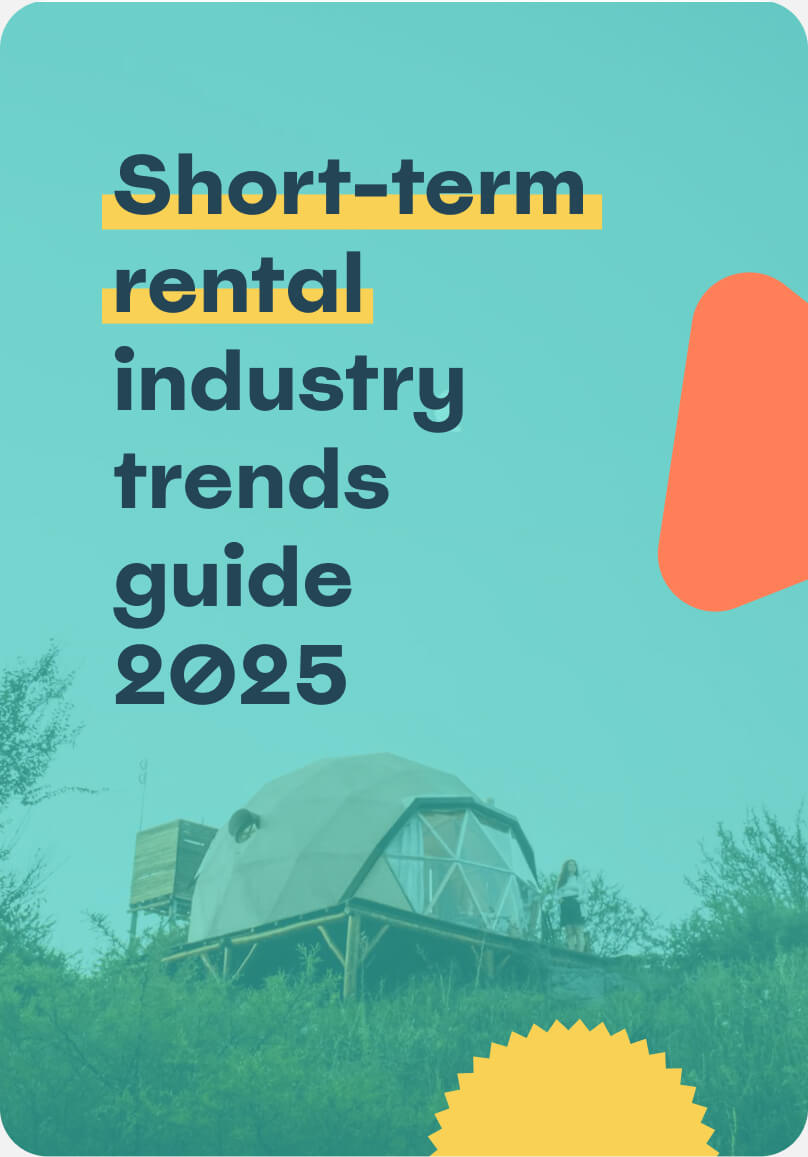
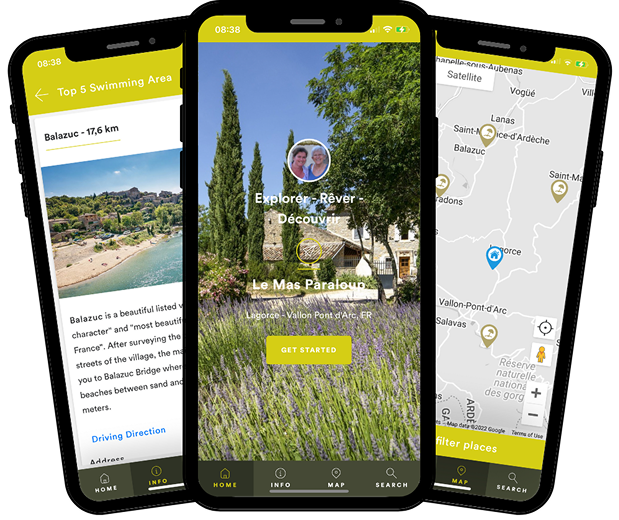
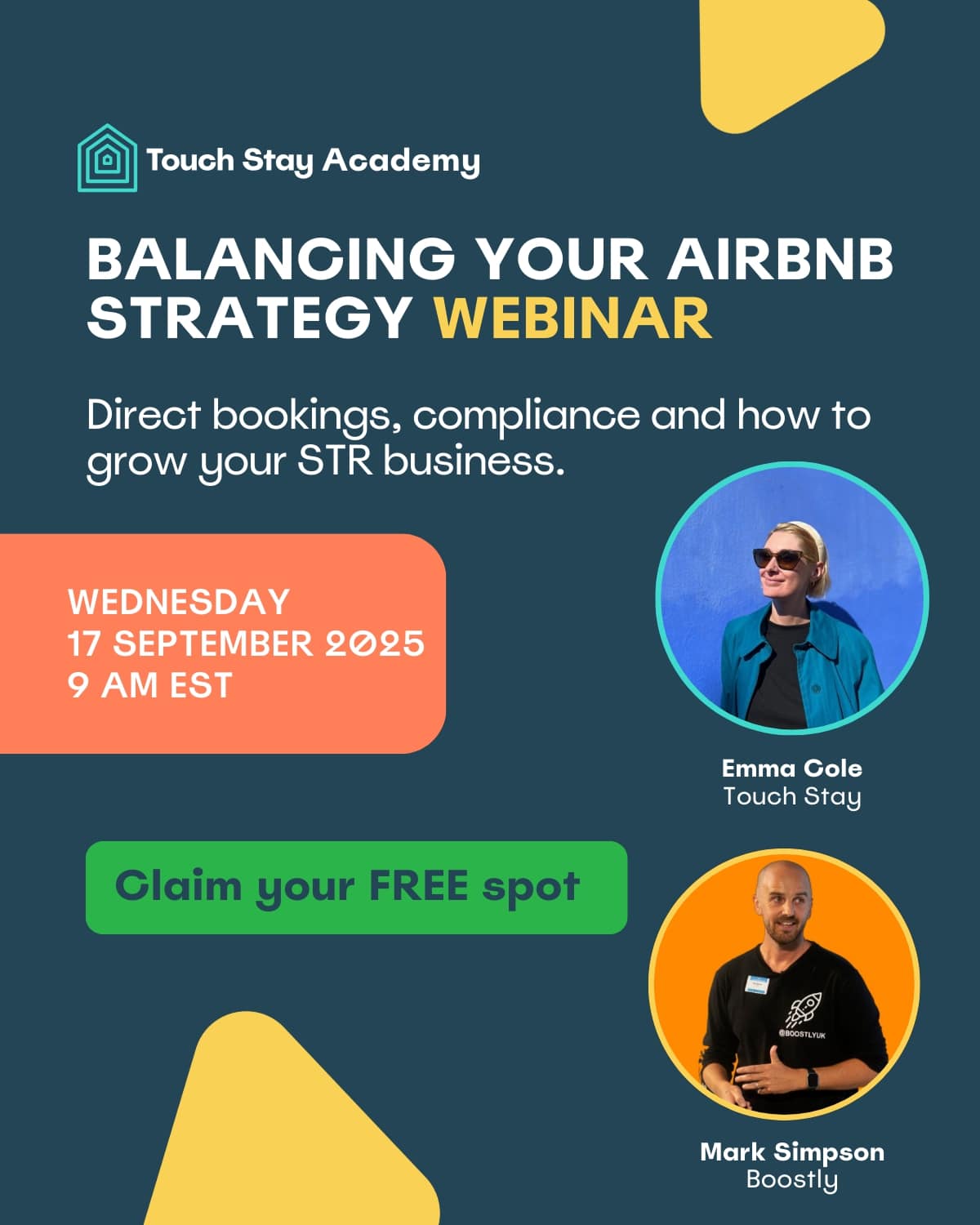
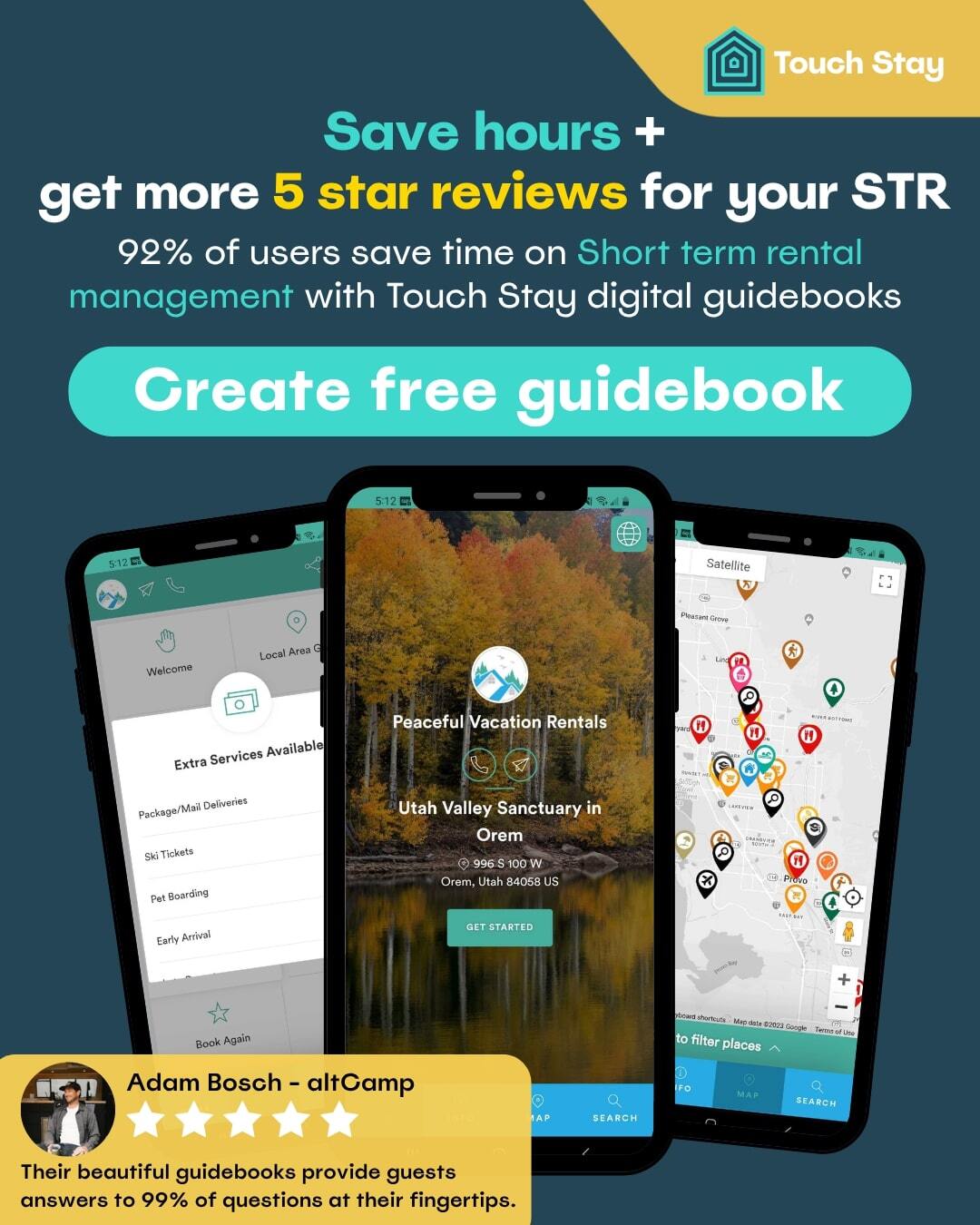
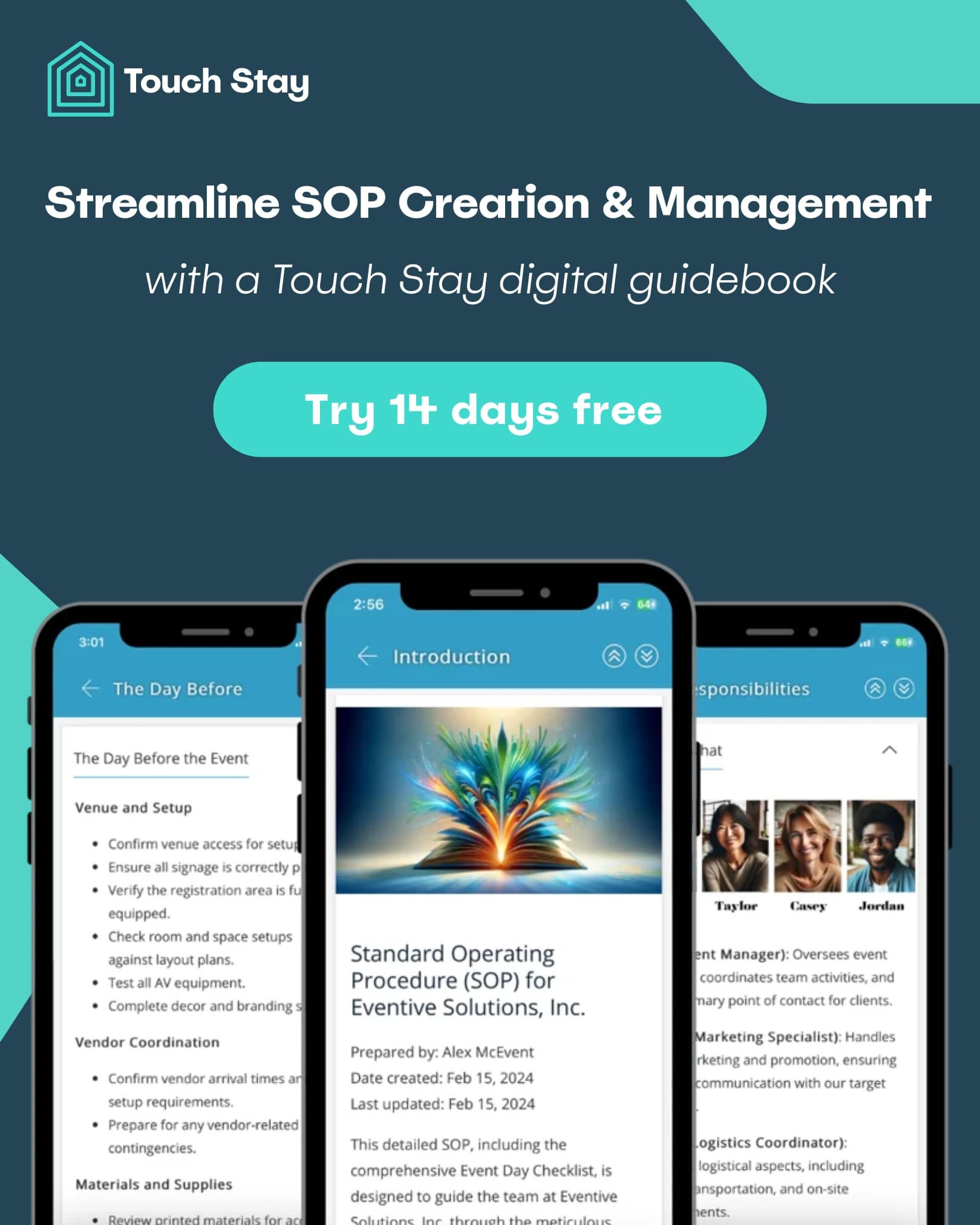
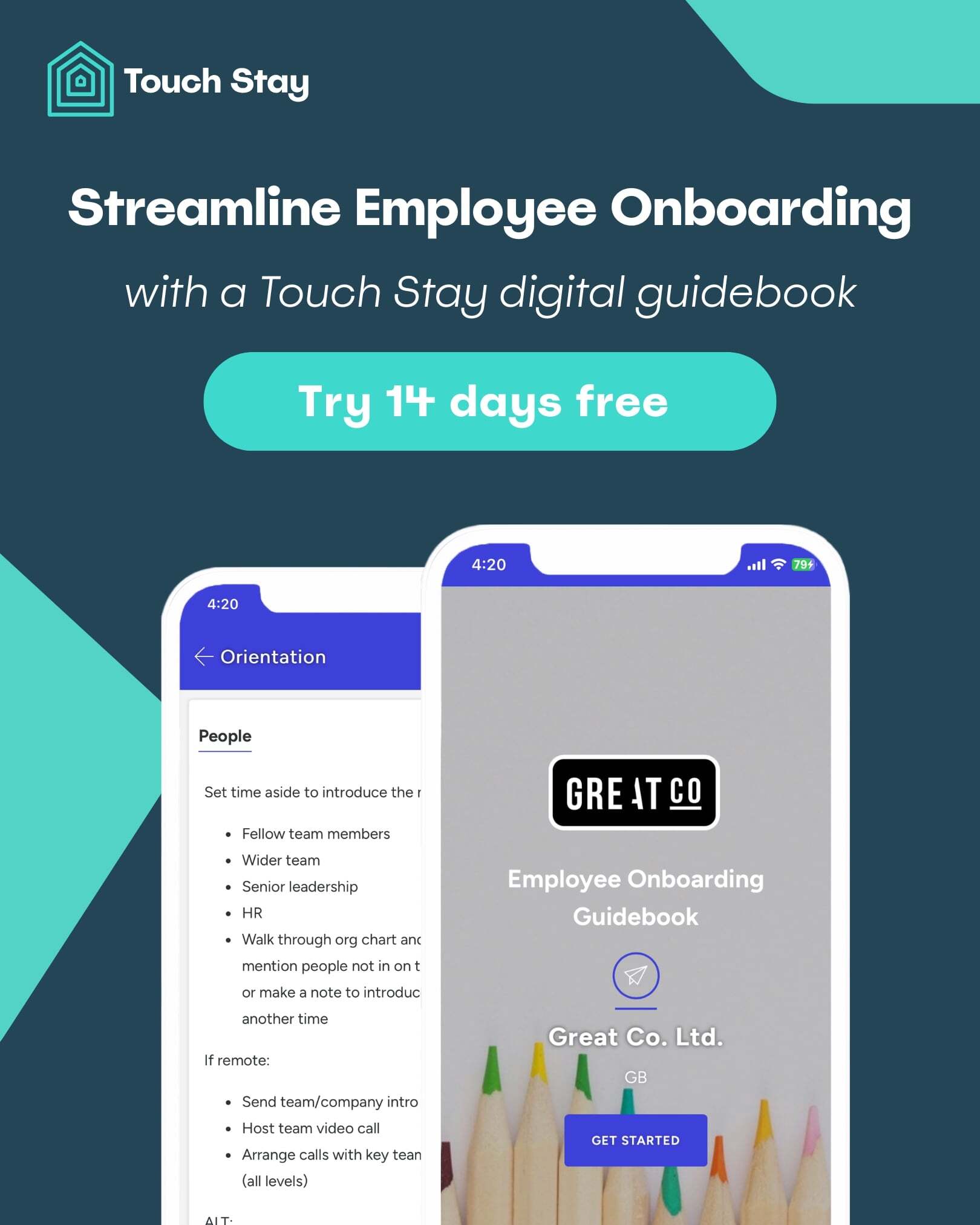

.png?width=50)




